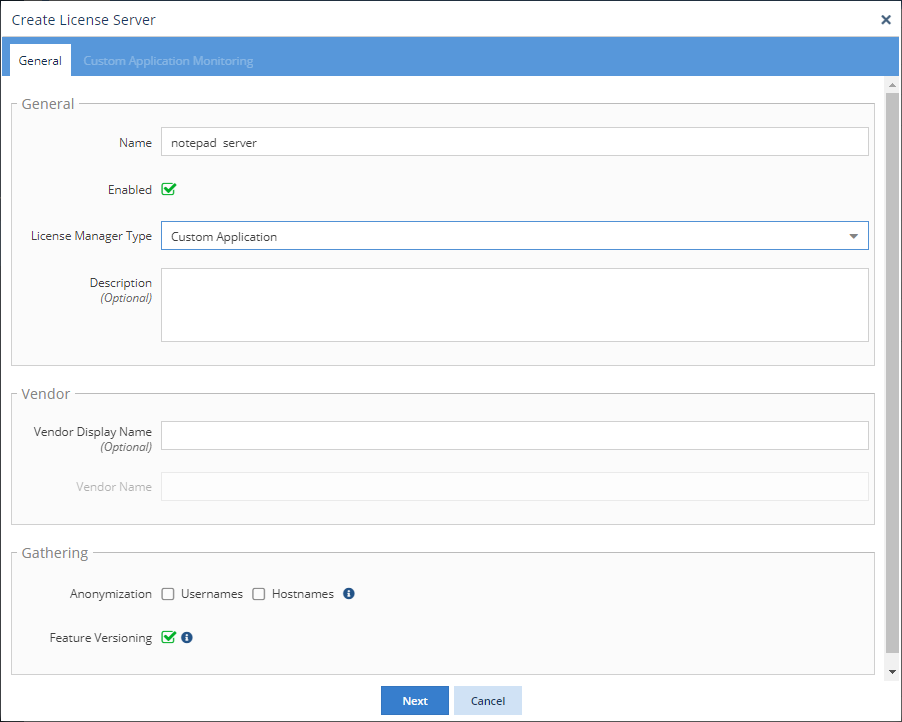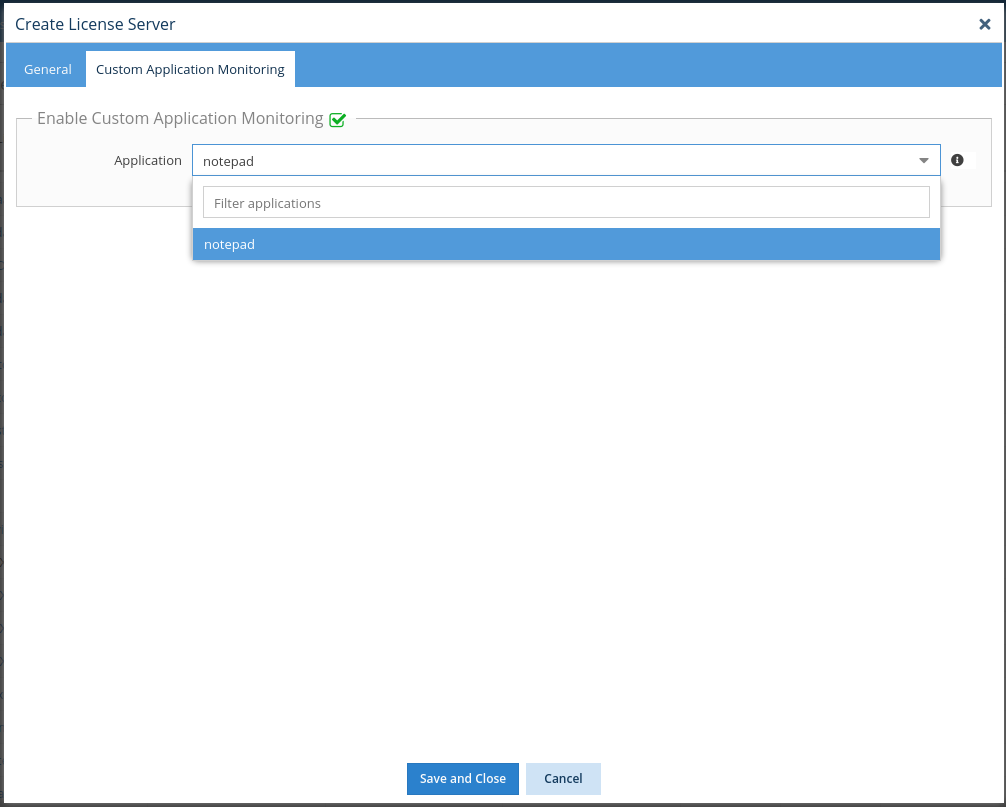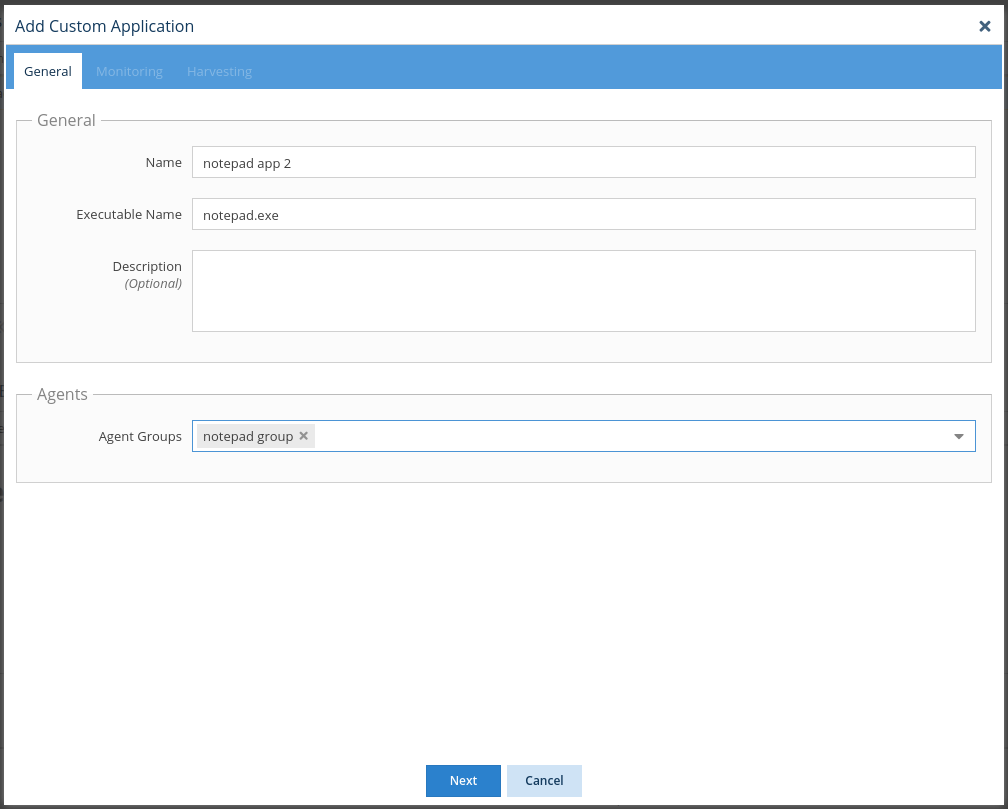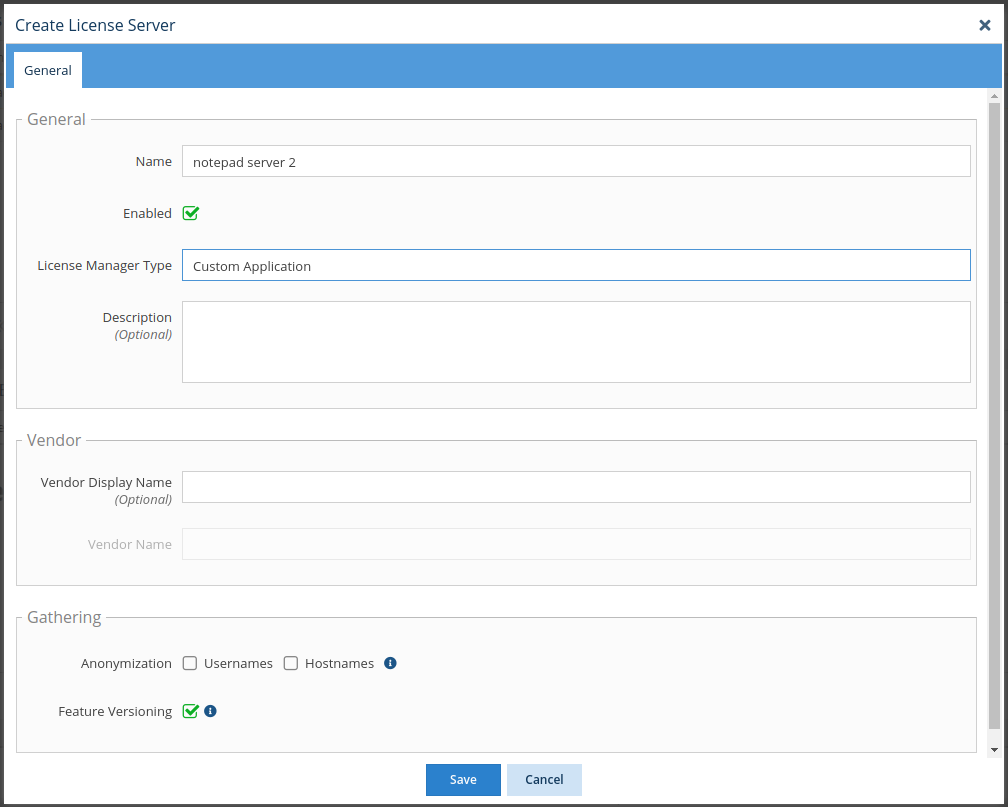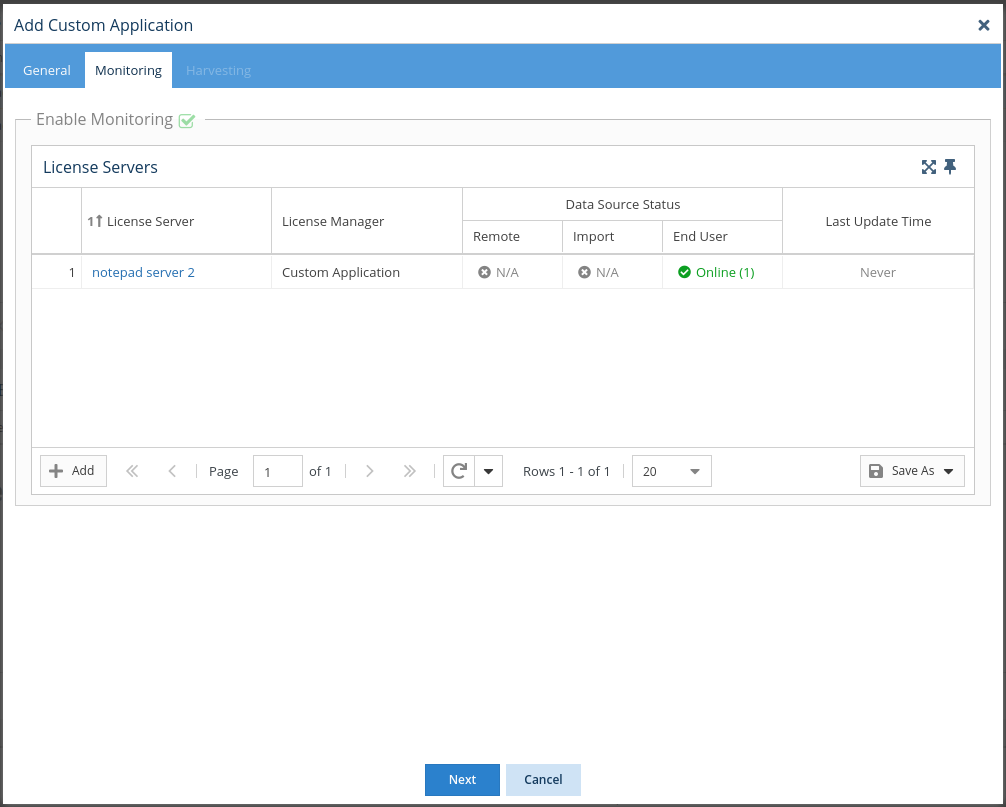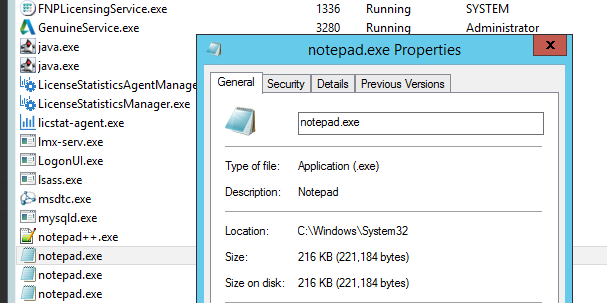...
The information on this page refers to License Statistics v6.13 19 and newer, which introduced Custom Application monitoring. added License Harvesting configuration settings to the Custom Applications grid. If you are using a version previous to v6.18, see documentation for previous versions. |
Requirements for setting up Custom Applications
To use Custom Application managementApplications, you must:
- Install License Statistics Agent and connect it to the License Statistics server.
- Add one or more Agent groups, if none have yet been added. (Agent groups can also be added on the fly when configuring the application for monitoring.)
- Configure the applications to be monitored, as described in this section.
| Note |
|---|
Each application requires one license server to be used. |
Configuring
...
Custom Application monitoring
You can configure applications to be monitored by:
...
or
...
- .
The following sections describe each method.
Anchor lic_server_option lic_server_option
Add a "Custom Application"
| lic_server_option | |
| lic_server_option |
...
license server
One method for adding a custom application to monitor is by adding a license server, as described below.
- Select License Servers from the Administration section in the left navigation pane.
- From the General tab, click the Add button located at the bottom left of the License Servers grid. An Add New A Create License Server dialog opens to allow you to configure the new license server.
- Enter a name for the license server.
- From the License Manager Type drop-down list, choose "Custom Application."
- Fill in the license server settings as needed and toggle the Enable option on/off in the same manner as for other license server types. See Adding and editing license servers for complete information about license server configuration.
- Click After you have completed all required fields for the license server, click Next to proceed to the Custom Application Monitoring tab.
- The Enable End User Custom Application Monitoring option is toggled on by default. This option must be toggled on in order to configure custom application Custom Application monitoring.
- From the Application drop-down list:
- If the application you want to monitor already exists, select the application. In this case, no further configuration is needed, and you can skip to step 11.
- If the application you want to monitor already exists, select the application. In this case, no further configuration is needed, and you can skip to step 11.
- Or
:- If the application does not already exist, create a new Custom Application on the fly by typing the name of
a - the new application you want to monitor
to create a new custom application - and then clicking on the
fly- name. (The application name
will be - is denoted with "(Create
New- new)"
if - when the name you type does not already exist, as illustrated below.)
- when the name you type does not already exist, as illustrated below.)
- For If you are adding a new application , complete (step 8b):
- Complete the basic configuration information, including the name that you want to use for the application in reports; the executable name; and an optional description.
- (See How the executable name is used for additional information regarding how executable names are used for Custom Application monitoring.)
- Select
- which Agent groups will be monitoring the application.
Or- If the Agent group does not already exist, create a new Agent group on the fly by typing the desired name in the Agent Groups drop-down list area and then clicking on the name. (The group name
- is denoted with "(Create
- new)"
- when the name you type does not already exist.)
- Click Save to close the configuration dialog, and then click Save and Close to add the new License Server license server and return to the License Servers page.
- You In the General tab of the License Servers page, you will now see under the General tab that the license server with the new application has been added for monitoring.
- Optionally, you can set up License Harvesting for the application.
Type
...
- Select Custom Applications under the Administration section in the left pane.
- Click Add. The Add Custom Application form opens.
- Fill in the Name and Executable Name fields. (See How the executable name is used for additional information regarding how executable names are used for Custom Application monitoring.)
- Select which Agent groups will be monitoring the application. You can create
Or
Create a new Agent group on the fly by typing the desired name in the Agent Groups drop-down list area and then clicking on the name. (The group name will be is denoted with "(Create Newnew)" if when the name you type does not already exist.) - Click Next to proceed to the Monitoring tab.
- Toggle on Enable Monitoring. (If Enable Monitoring is not toggled on, the rest of the tab will be blank.)
- Click the Add button in the lower left of the License Servers grid.
- Fill in the form to add the new License Server license server that will be used by the custom applicationCustom Application. (Note: The License Manager Type is automatically set to "Custom Application" and cannot be changed.)
- Click Save to save the new Custom Application license server. You will see that the license server is has been added to the License Servers grid in the Monitoring tab.
- Click Next to proceed to the License Harvesting tab, and optionally, set up set up License Harvesting for the application.
- Click Save to save the configuration and return to the Applications page. You will see that the new application has been created and is included in the Applications grid.
| Anchor | ||||
|---|---|---|---|---|
|
The executable name provided during Custom Application setup (described in the instructions above) is used on the host to detect whether the application is running. The executable name is processed differently, depending on what you enter in this field during Custom Application setup, as detailed below.
- The executable name is not case-sensitive. For example, "NOTEPAD.exe" is processed the same as "notepad.exe".
- When you provide the full executable name, the name will match only that specific executable. For example, if you enter the executable name "notepad.exe," it will only match Microsoft Notepad instances and will not match Notepad++ instances, as illustrated below.
- When you provide a partial executable name, it will match any executable name that contains those characters; for example, "app" will match "some_app1.exe," "some_app2.exe," etc. Additionally, note that:
- The applications must have the same vendor; otherwise, monitoring will fail, because License Statistics does not support multiple vendors for a single application
- To monitor multiple processes that have different vendors, you must add each process as an individual custom application with a separate license server
- When you provide a full path for the executable name, it will match only the instances in the explicitly specified path. For example, you can specify the full path "C:\Windows\System32\notepad.exe" as the executable name to specifically monitor only the Microsoft Notepad applications found under that path, as illustrated below.
